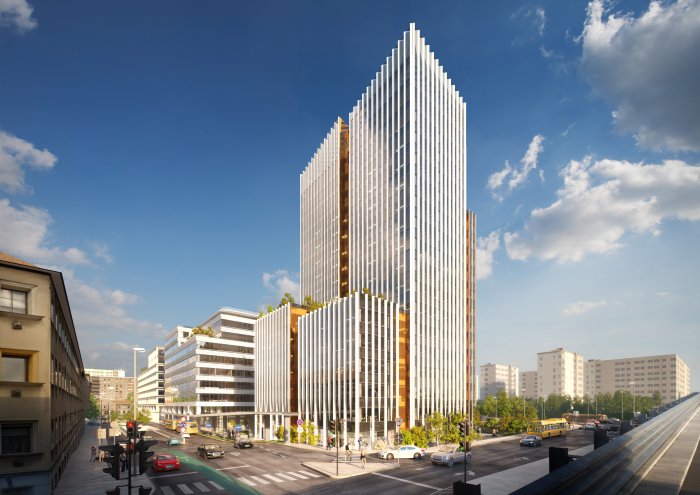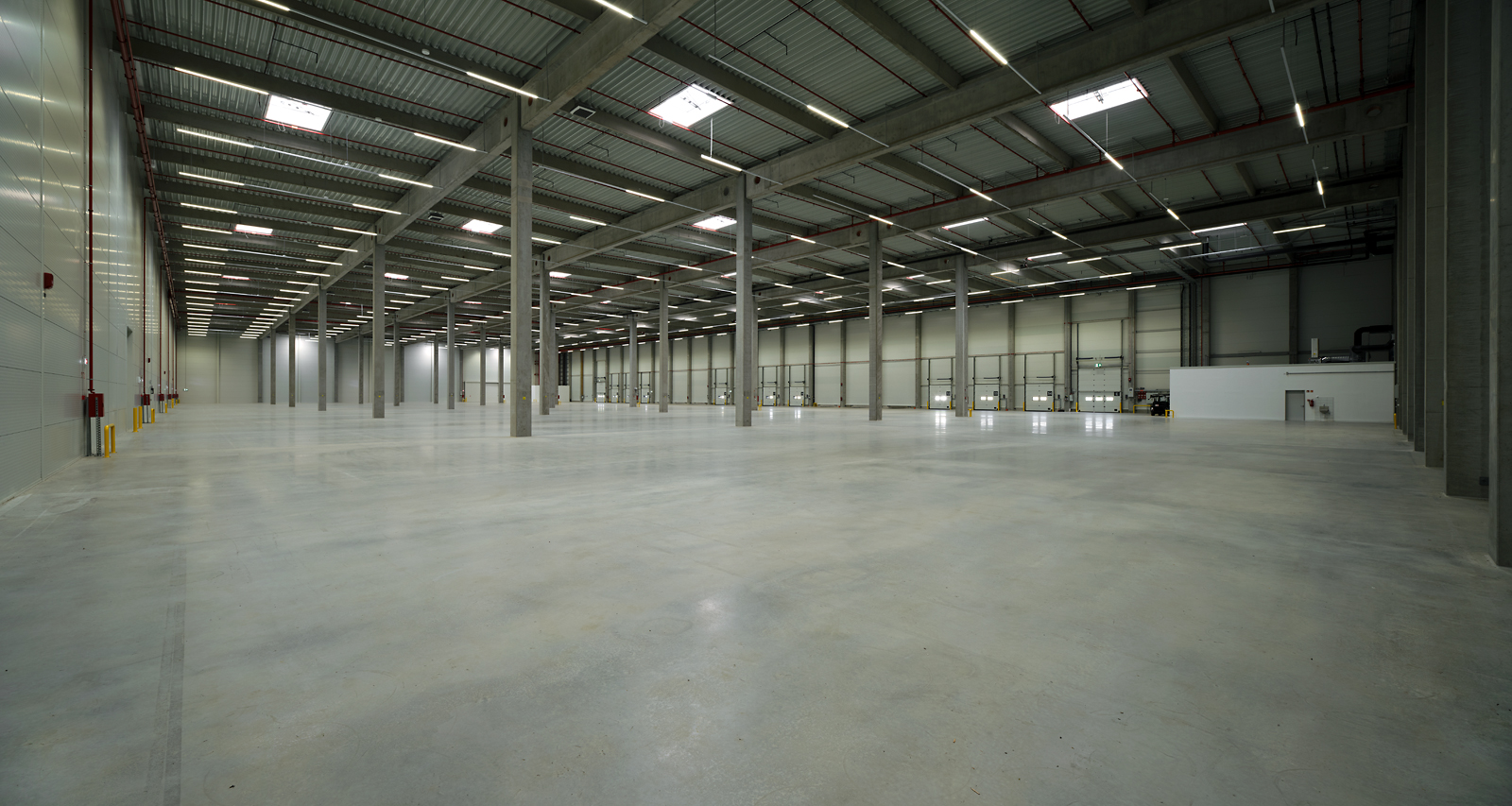Investment Volumes Expected to Follow Pattern of Previous Year

A wider pool of international investors have made acquisitions in Hungary, although domestic funds represent around 50% of activity. While the fundamentals are positive from both a supply and demand perspective, the low availability of investment grade product is acting as an impediment to market development.
Agora Tower by HB Reavis is being offered to investers in Budapest.
Despite that, sector pipelines are seen as disciplined with continued high demand in the New Year and a high proportion of preleases in the office and logistics market. Further, increasing construction costs of around 10% annually are acting as a brake on development and property management.
It remains to be seen if more skilled workers can be persuaded to return to Hungary and more young people can be attracted to the technical professions.
The 2019 total investment volume in Hungary surprised on the upside and matched the EUR 1.8 billion traded in 2018, despite the severe product shortage investors refer to as the main bottleneck of further market growth, according to CBRE.
“Based on most recent data, the Hungarian economy remained in a very strong shape throughout 2019 and is expected to strongly outperform the rest of Europe in 2020 as well, although growth will be more moderate,” says Gábor Borbély, head of research at CBRE Hungary.
“CBRE registered EUR 1.8 bln turnover on the Hungarian commercial property investment market in 2019. This was the third year on record with this level of investment, which proves that further market growth is limited by scare supply rather than potential demand,” he explains.
“Investors’ sentiment around Hungary remains solid as we step into 2020. Based on our pipeline estimation, we expect the market to see more large-scale transactions this year compared to previous years,” Borbély adds.
Colliers International put preliminary 2019 investment figures for CEE (Hungary plus Bulgaria, the Czech Republic, Poland, Romania and Slovakia) at about EUR 13 bln. The estimated total for Hungary stands at EUR 1.7 bln, or EUR 1.89 bln including land and development deals.
This compares to EUR 3 bln for the Czech Republic, a similar sized country to Hungary, and EUR 7.3 bln for Poland, which continues to be the largest investment and development market in the region. A yield differential of 75-100 basis points between Hungary and the Czech market is expected to be maintained this year.
Clear Disbalance
“It is clear that there is a disbalance between supply and demand in almost all the markets in CEE and even more broadly across Europe,” comments Luke Dawson, head of CEE capital markets at Colliers International.
“However, I believe that this lack of supply is not a negative factor overall as it speaks firstly to the fact that existing holders are not looking to exit their positions in CEE. Secondly, it keeps our markets from overheating. For 2020, I would expect the same with the sector breakdown continuing to favor office,” Dawson says.
Total supply in the Budapest office market has reached around 3.6 million sqm according to the Budapest Research Forum (the BRF is made up of CBRE, Colliers International, Cushman & Wakefield, Eston International, JLL and Robertson Hungary).
From this figure, a little more than 3 million sqm is defined as Class “A”. Vacancy has fallen further to close to 7%, one of the lowest levels ever recorded in the Budapest office market. The industrial market currently has vacancy rate of 2.4%, a historical low in a market that, in the greater Budapest area, has a total stock of 2.2 million sqm. Very few existing logistics projects have 5,000 sqm plus spaces available, according to BRF.
Benjamin Perez-Ellischewitz, head of capital markets at JLL, argues that, in contrast to previous development cycles, there is little possibility of oversupply with, for example, pipeline in the Budapest office market representing around 10% of total stock. Investors also now have far better knowledge of the development markets.
Hotel Attraction
With a limited supply of assets in the office, industrial and retail sectors, investors are looking to make acquisitions in the hotel sector.
“European hotels outperformed the other key regions in 2019, both in terms of hotel operating performance and occupancy, with growth in demand expected to persist in 2020,” says CBRE.
“As a result, institutional investors will increasingly consider operational hotel investments. In 2020, it is expected that institutional capital will account for more than 30% of the European hotel deal volume,” it adds.
With regard to the wider European investment climate (and against the backdrop of U.S.-EU trade tensions and some political uncertainty in Italy and questions over what Brexit will look like in the United Kingdom), economic growth, while slowing, is set to remain positive.
“The low interest environment, supported by central bank policies, is set to continue through 2020. This will support the attractiveness of real estate yields compared to other asset classes, bringing fresh opportunities for the sector to attract institutional investors across Europe,” says Richard Holberton, head of occupier research for EMEA at CBRE.
“Regulatory and social pressures surrounding sustainability will be a growing influence on occupier decisions and increasingly have knock-on effects on funds and property managers,” he comments.
As to the origin of investors in Hungary, Mike Edwards, head of capital markets at Cushman & Wakefield Hungary, expects more international investors competing with the established domestic real estate funds: Erste, OTP and Diófa.
In addition, a further strata of private Hungarian capital is becoming more active on the Hungarian market and increasing competition for investment grade product, Edwards says.
SUPPORT THE BUDAPEST BUSINESS JOURNAL
Producing journalism that is worthy of the name is a costly business. For 27 years, the publishers, editors and reporters of the Budapest Business Journal have striven to bring you business news that works, information that you can trust, that is factual, accurate and presented without fear or favor.
Newspaper organizations across the globe have struggled to find a business model that allows them to continue to excel, without compromising their ability to perform. Most recently, some have experimented with the idea of involving their most important stakeholders, their readers.
We would like to offer that same opportunity to our readers. We would like to invite you to help us deliver the quality business journalism you require. Hit our Support the BBJ button and you can choose the how much and how often you send us your contributions.









